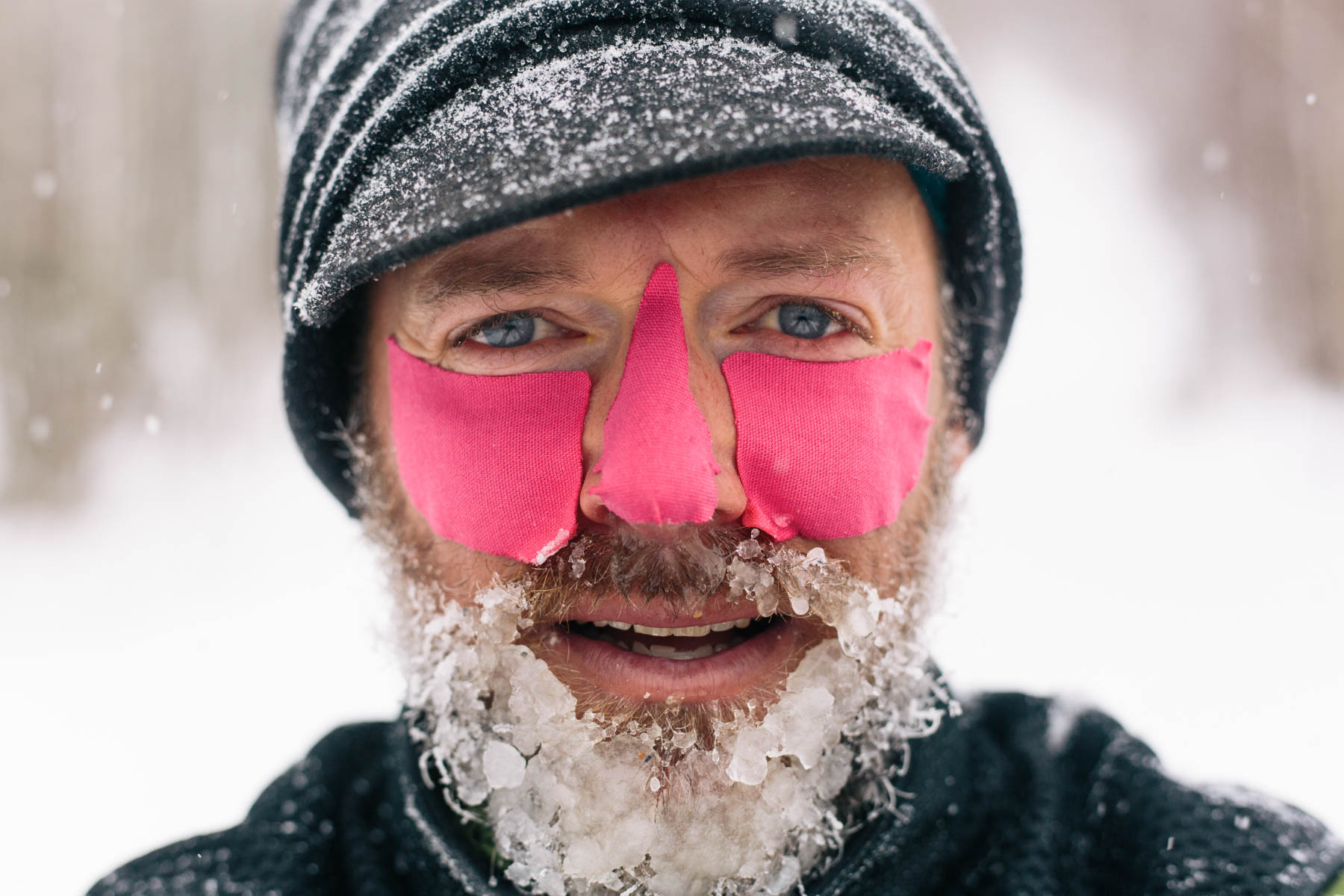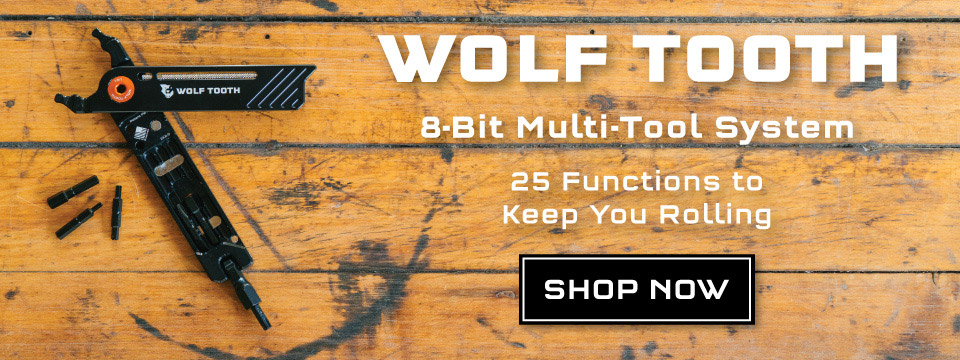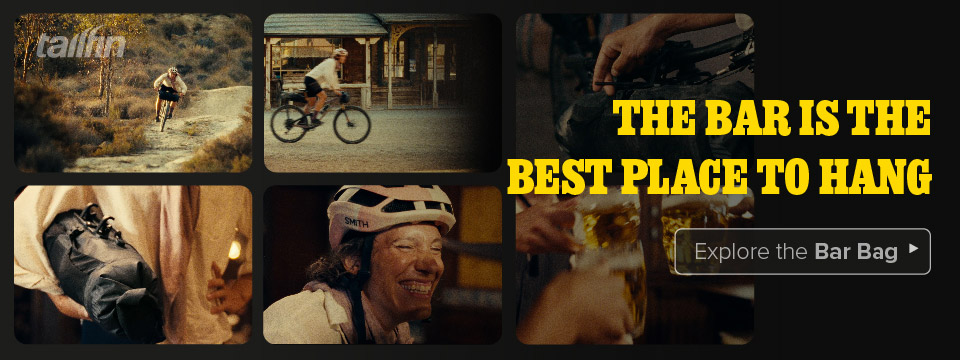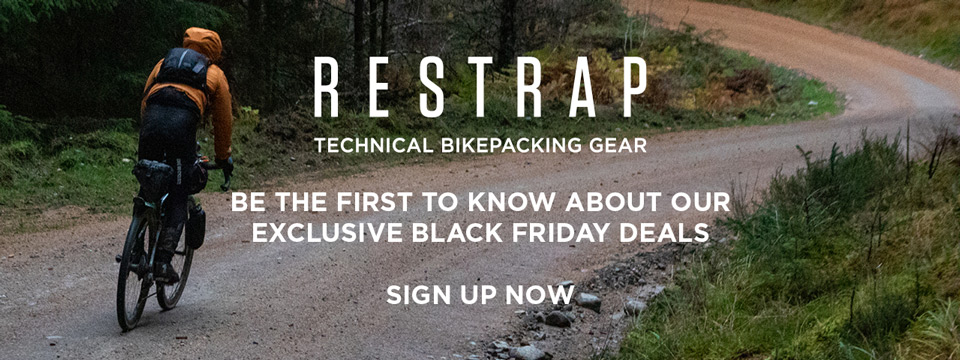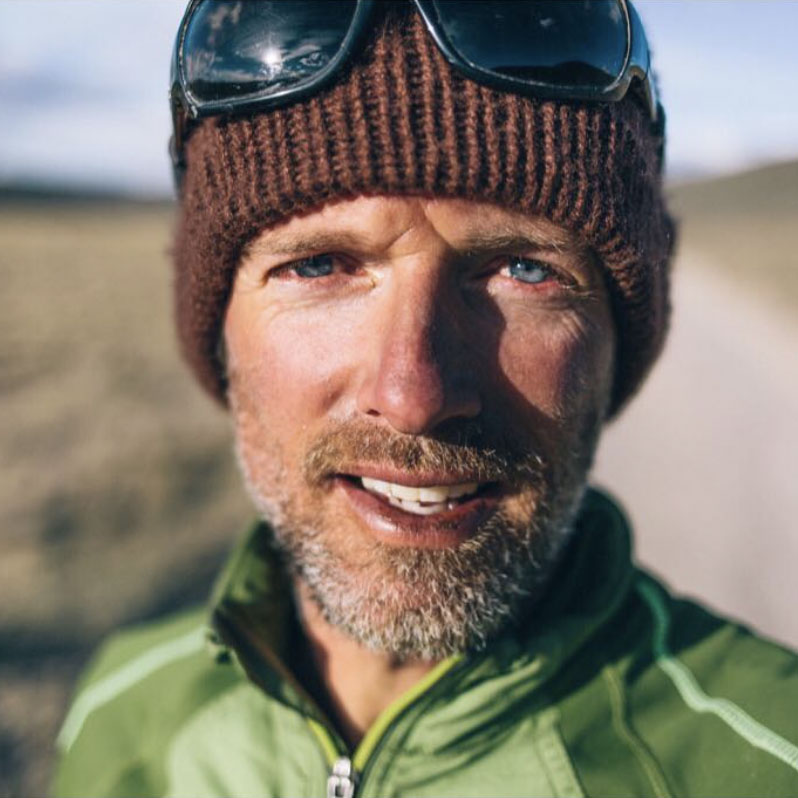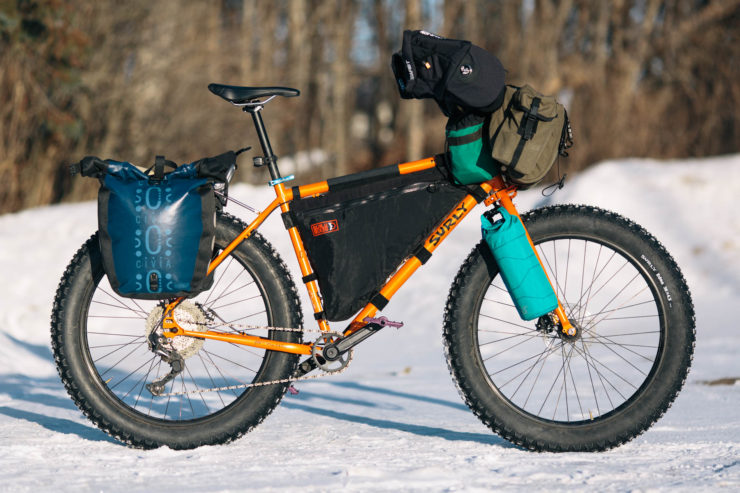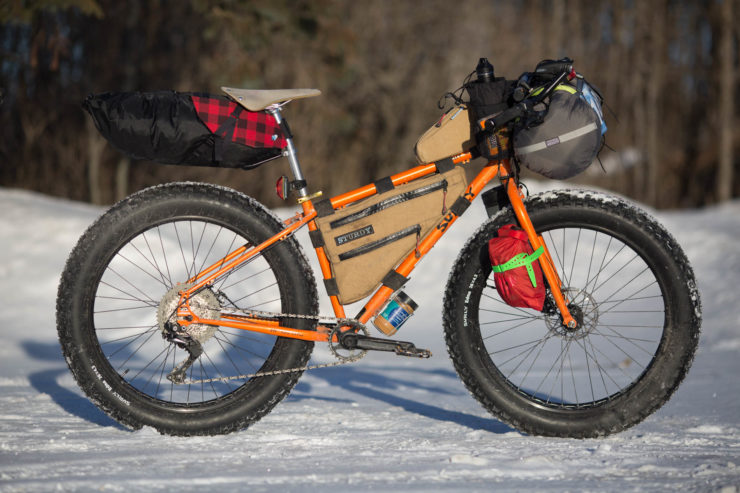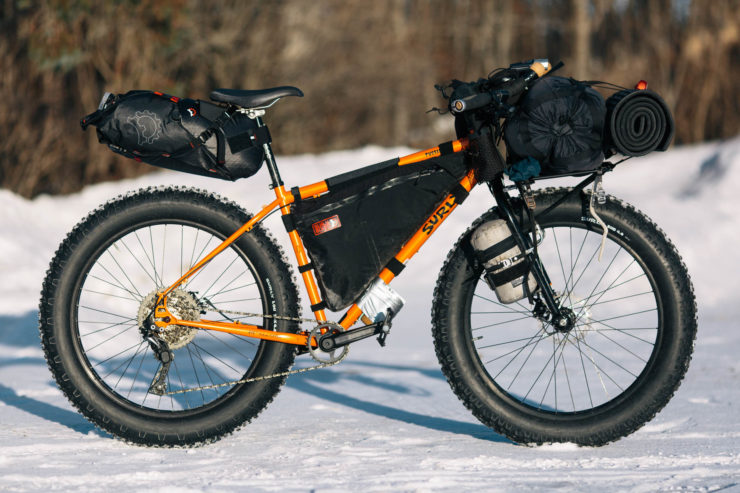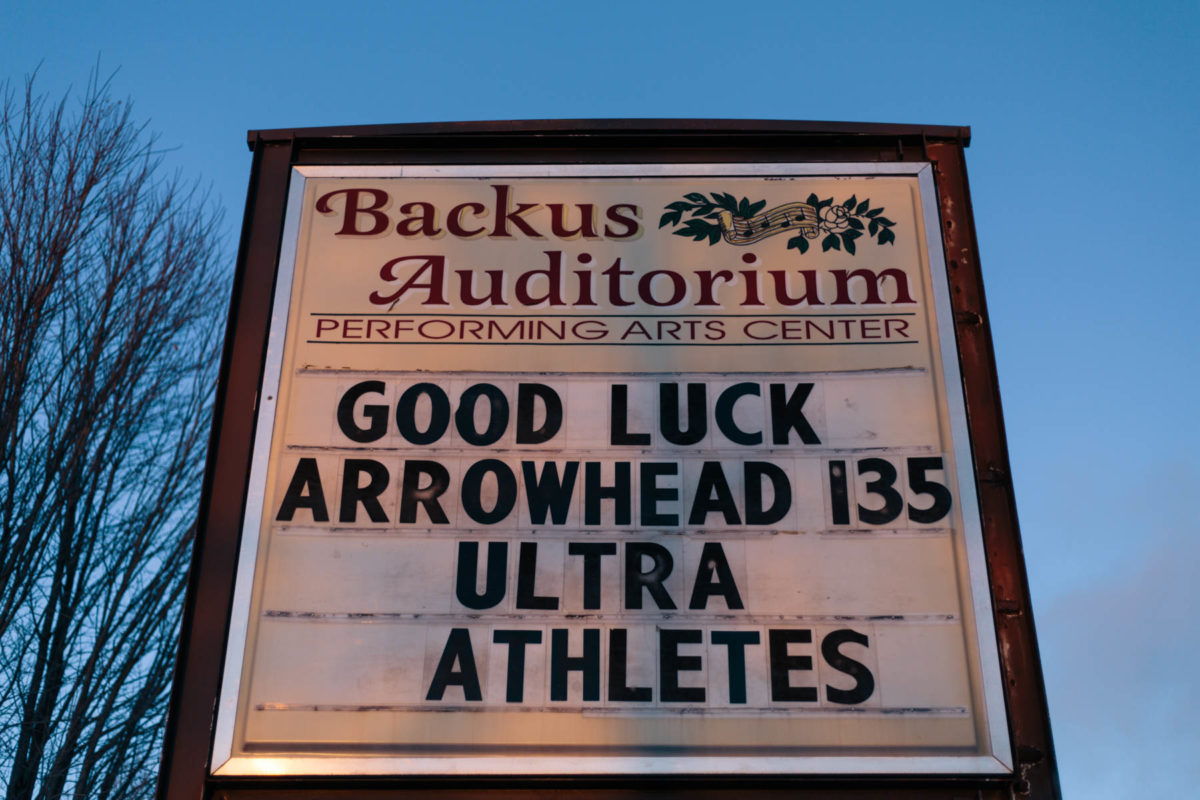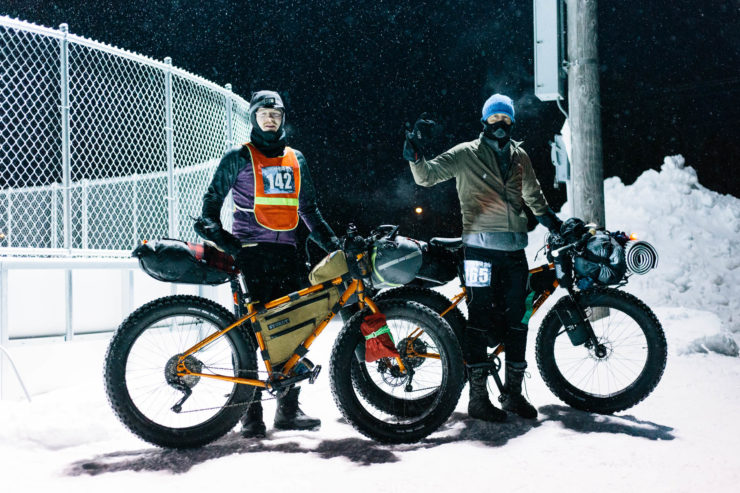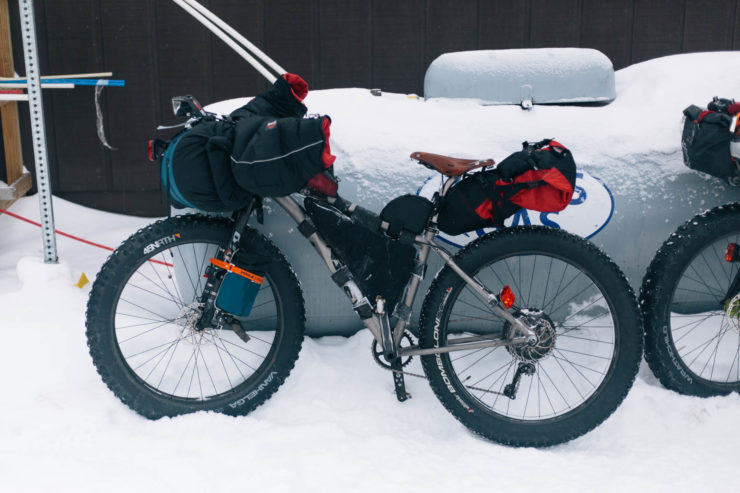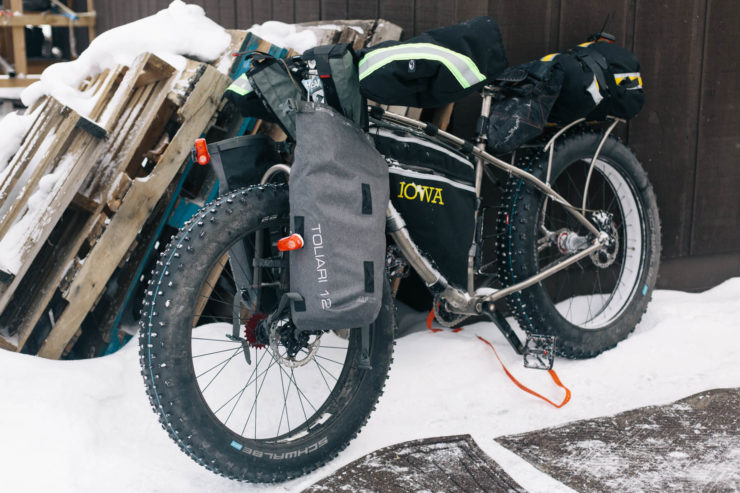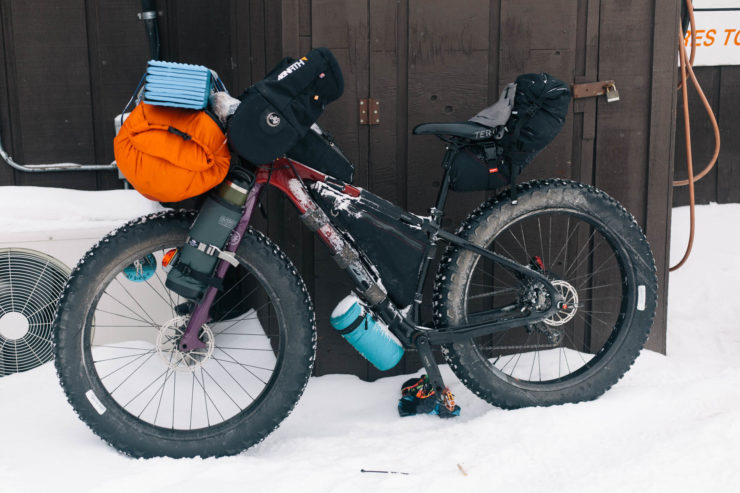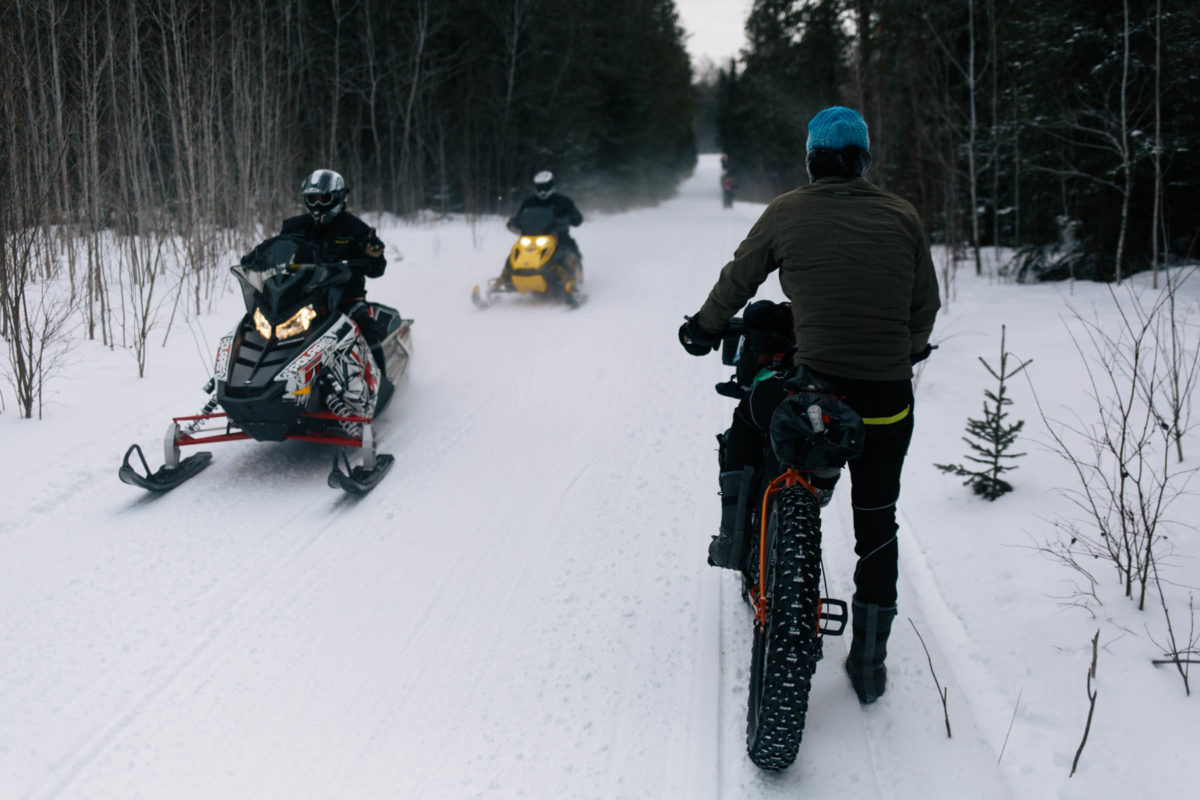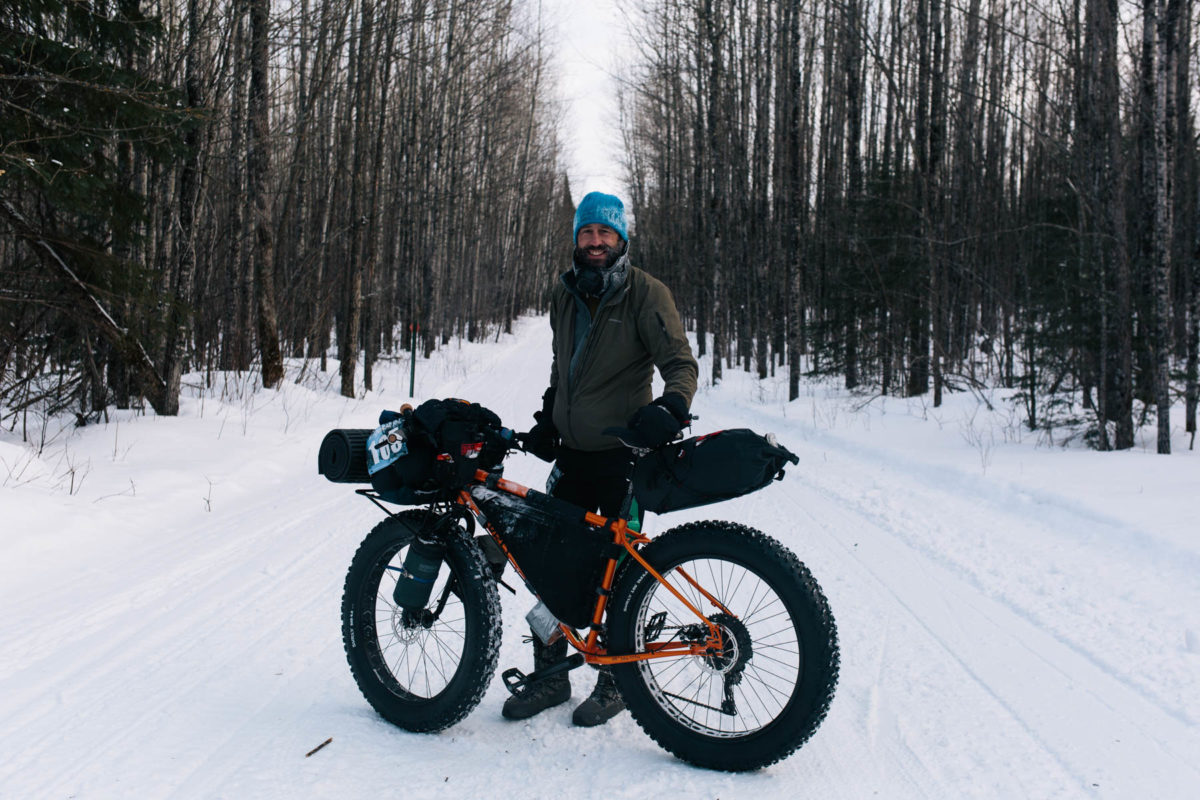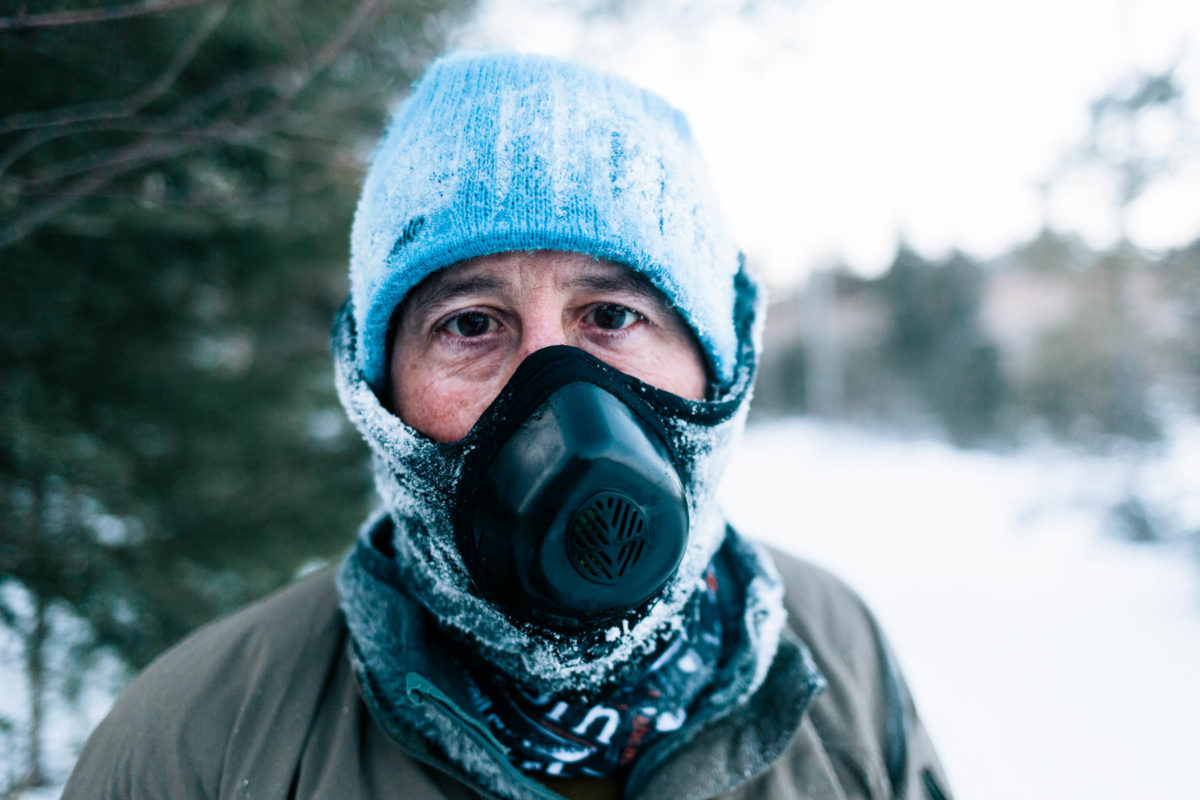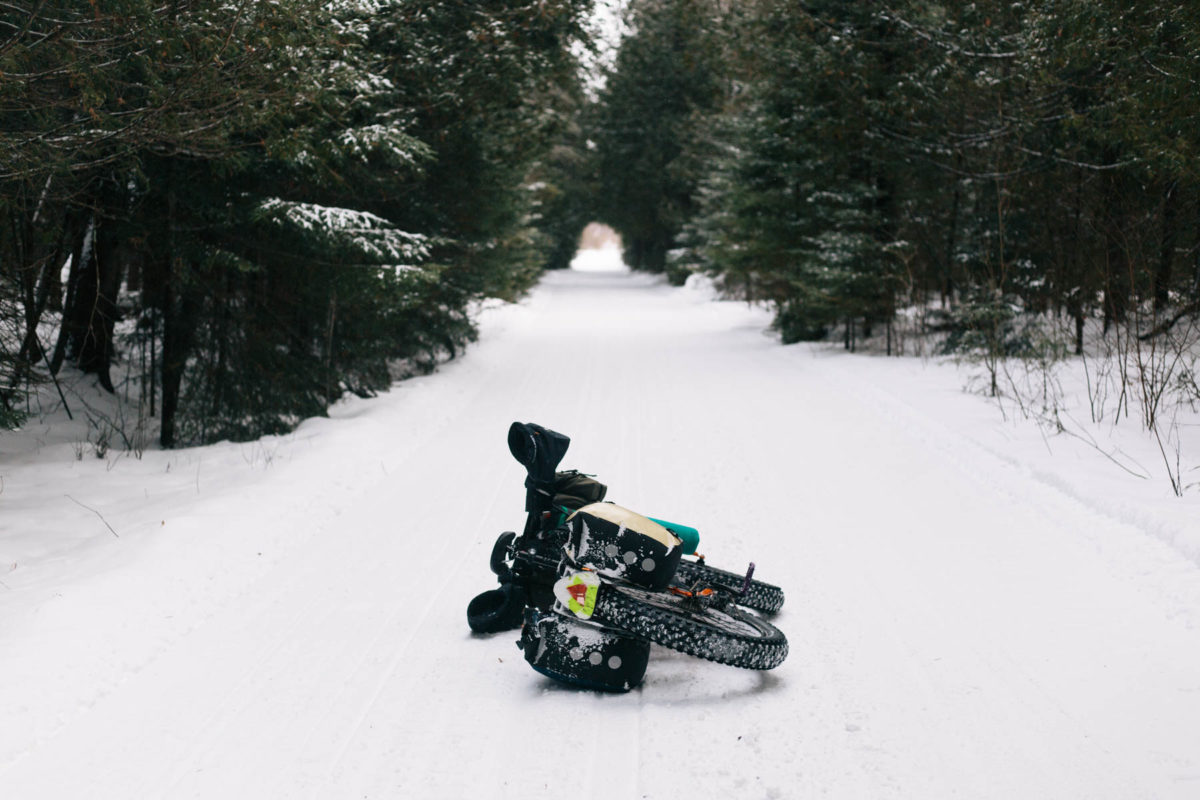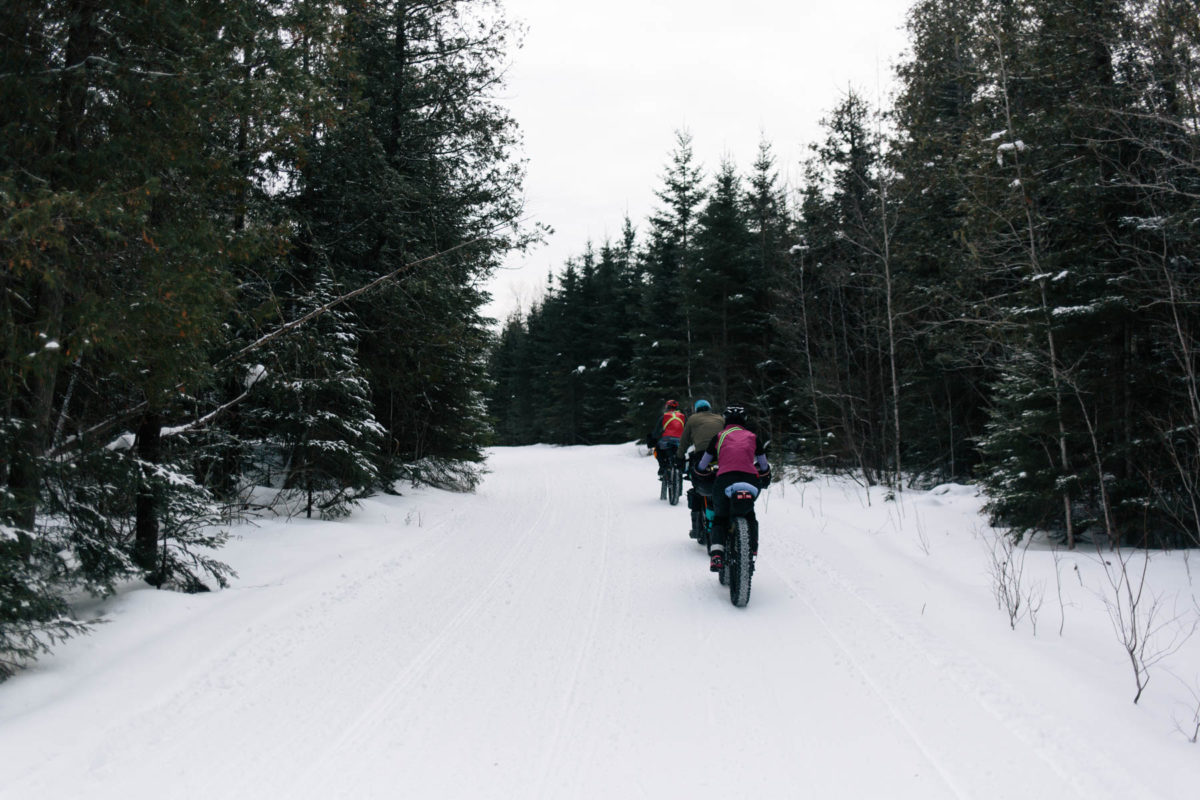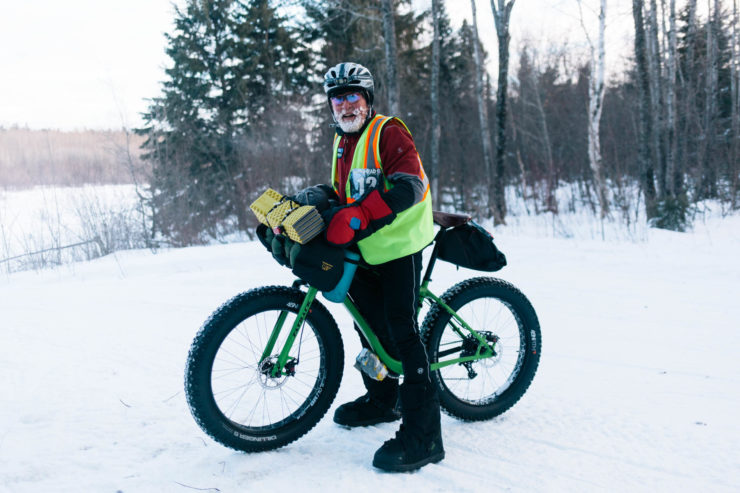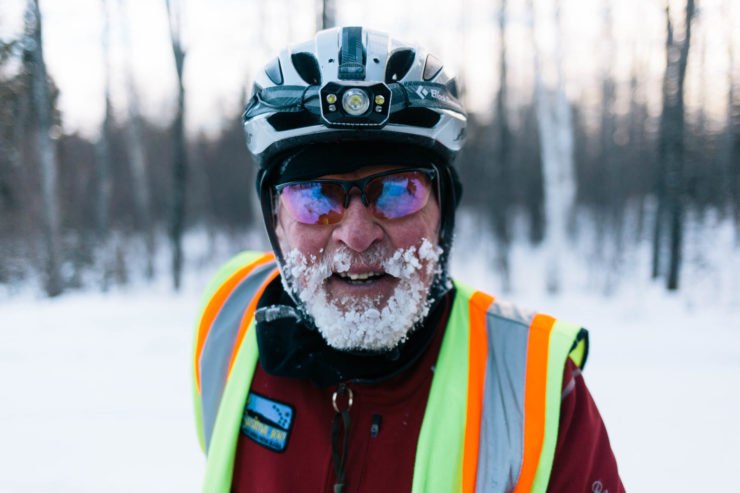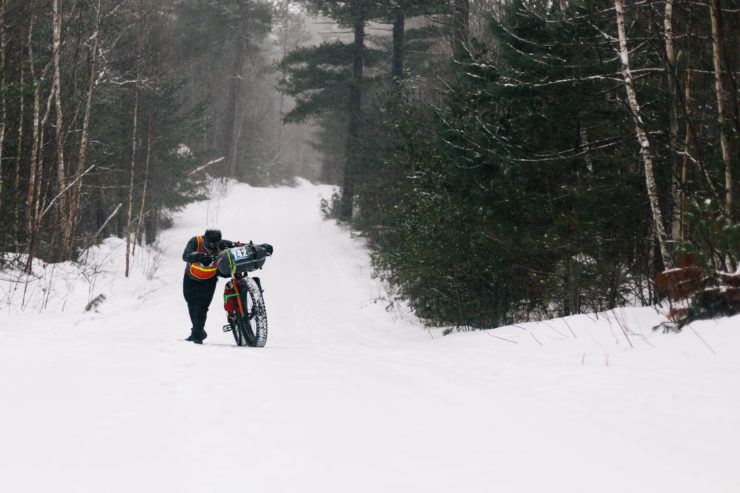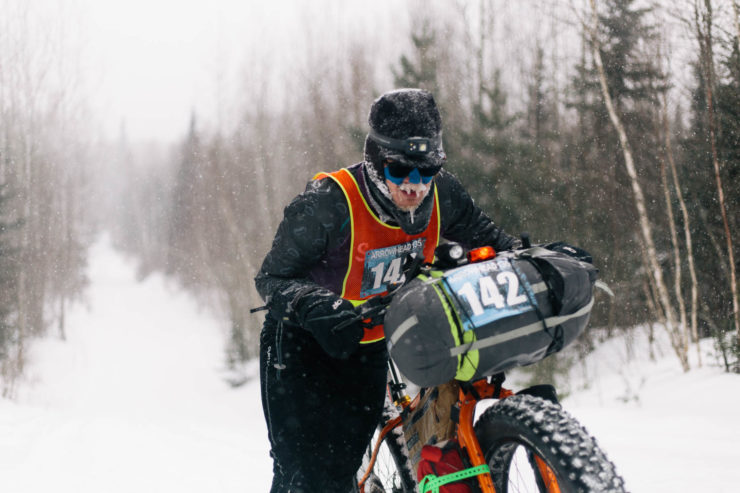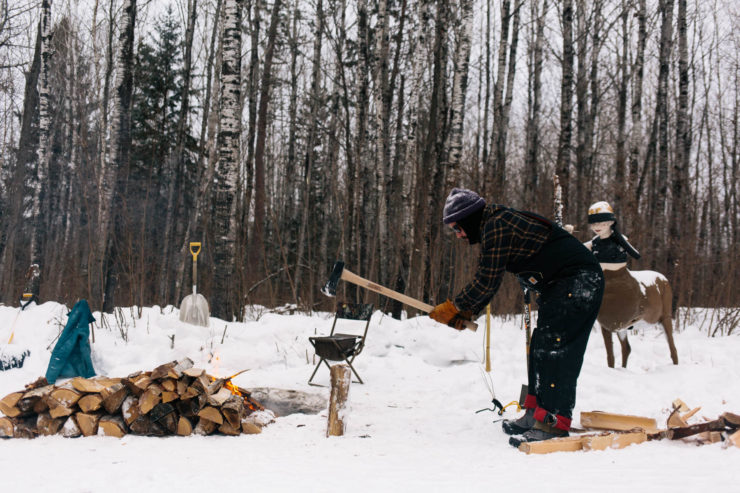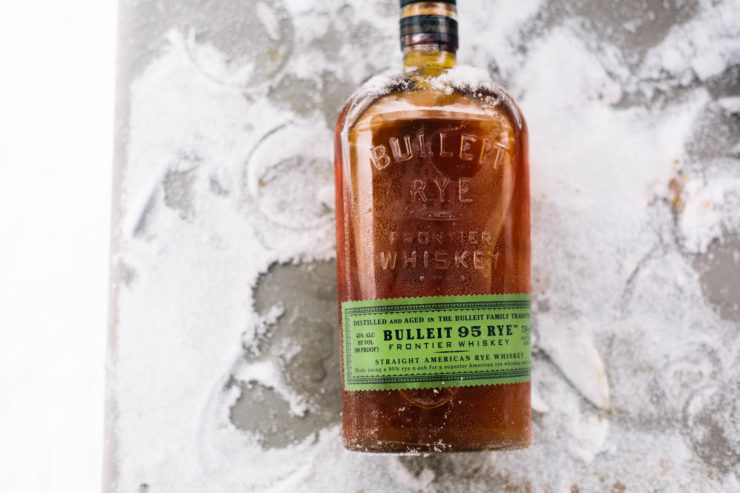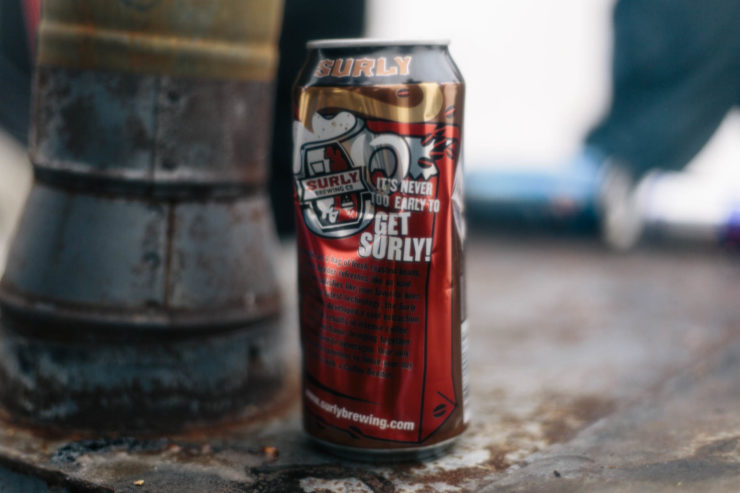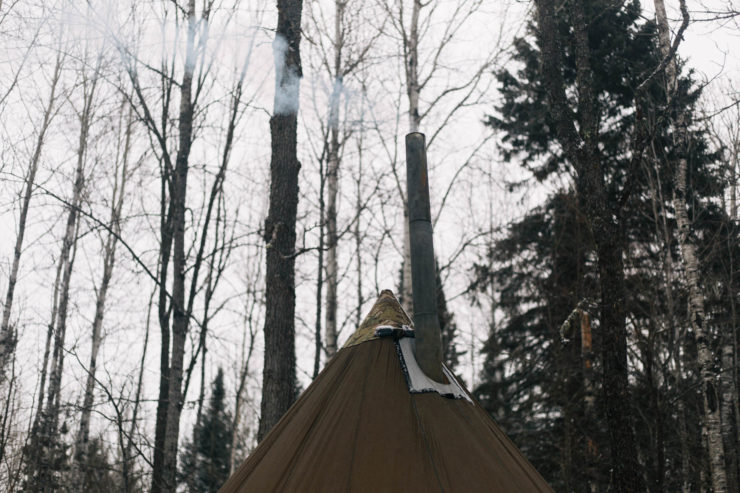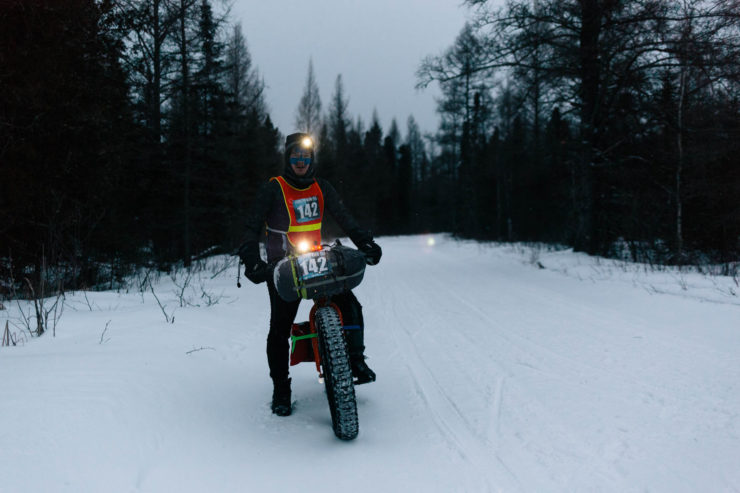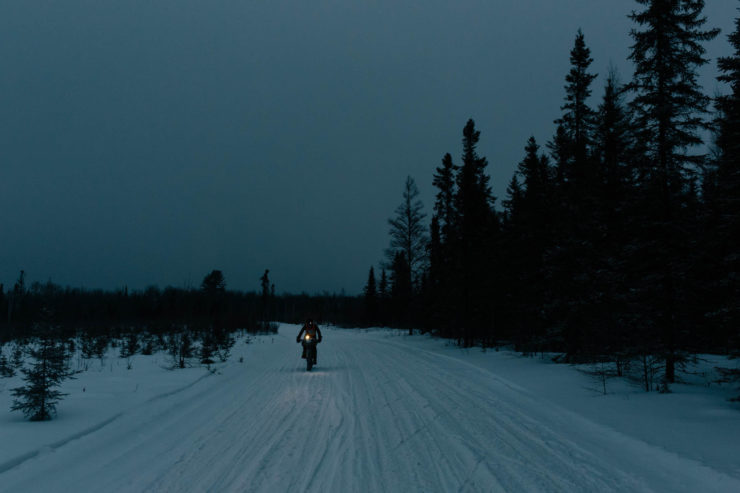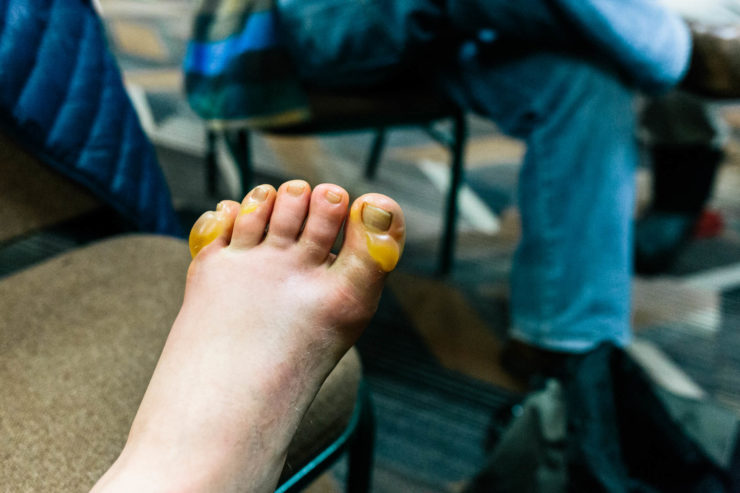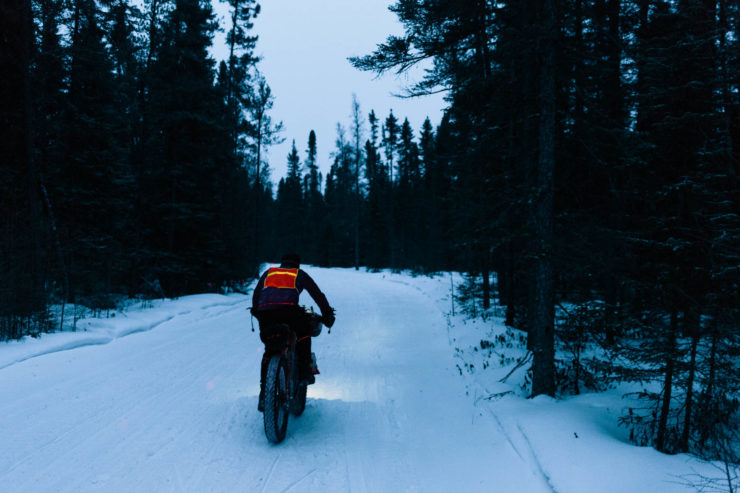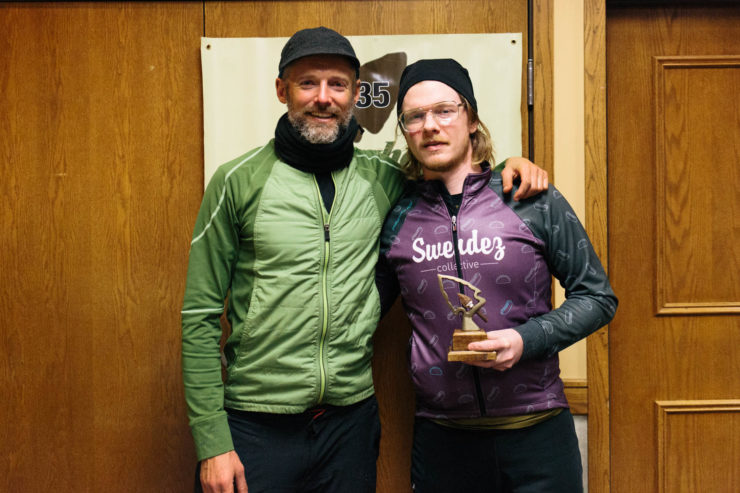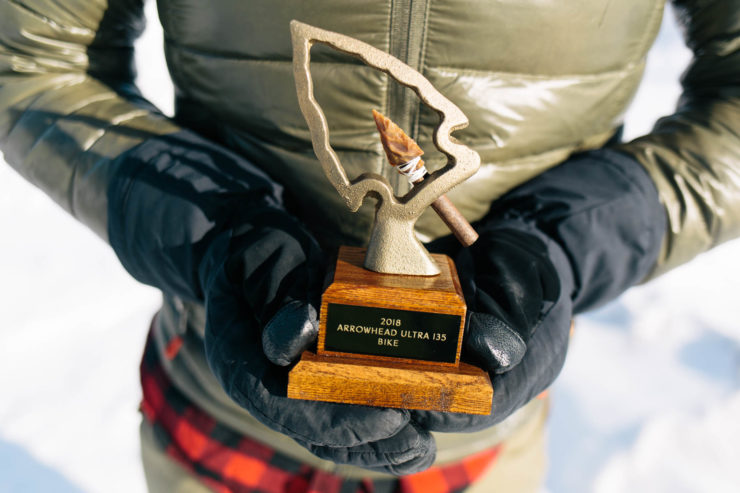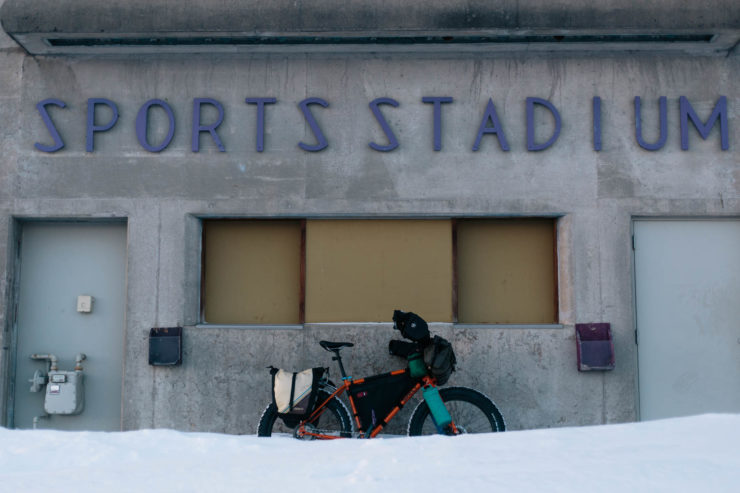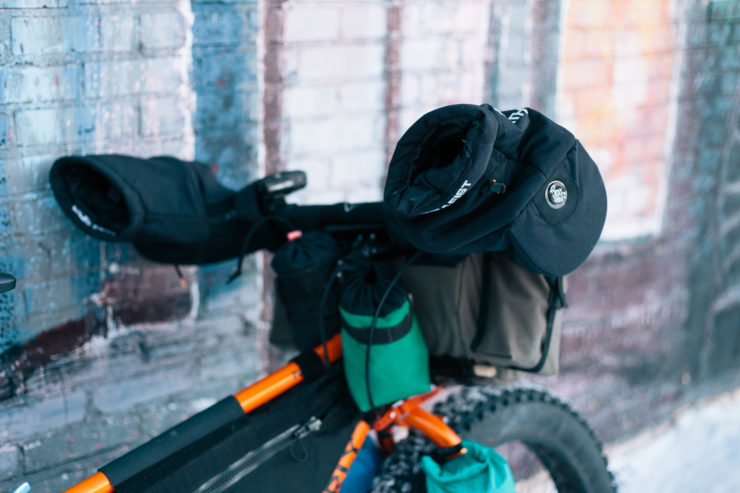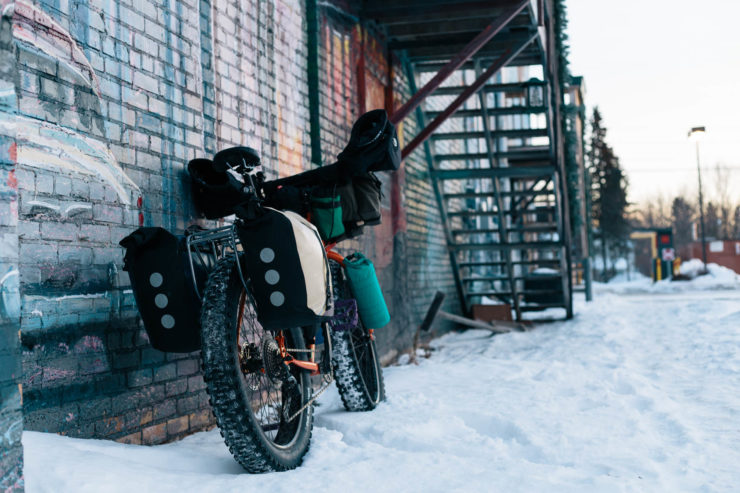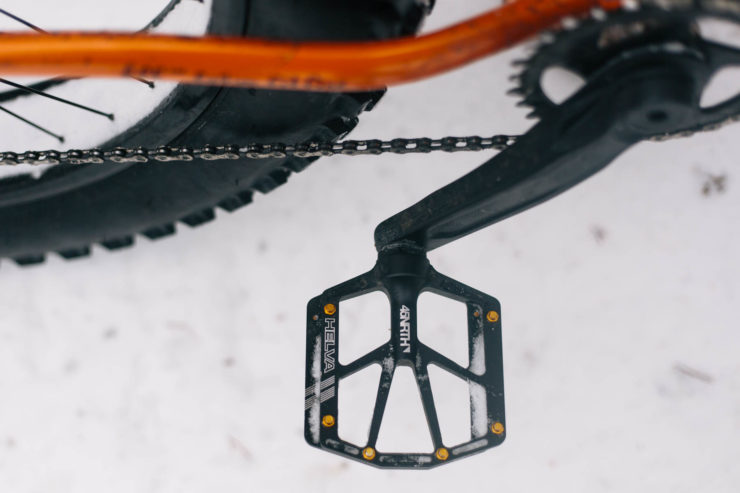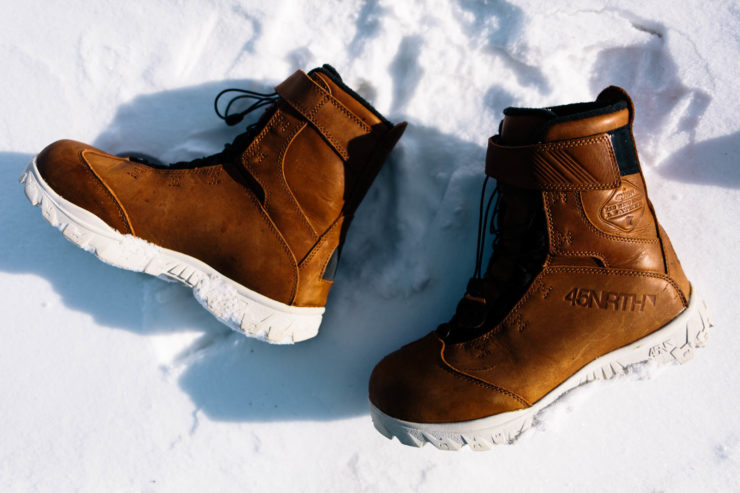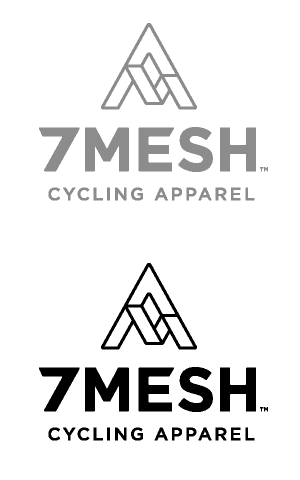The Arrowhead 135: An unracer’s perspective
Every year, a hundred-strong tribe of winter-hardened fat bikers, skiers, and hikers gather in Northern Minnesota to race across a land known as the Icebox of the Nation. This year, I was one of them. Kind of…
PUBLISHED Mar 15, 2018
I should preface this account with the following disclosure: I am not racer. I live in the desert. And I loved my first winter ultra, the Arrowhead 135.
But first, some backstory. I’d ridden with Paul Zeigle, Surly’s head-honcho-of-bike-and-beer (aka Brand Manager) on a couple of prior occasions. Once, during a short but beautiful winter bikepack in Duluth, Minnesota, and then last summer, along a sizable chunk of the epic Colorado Trail. The latter was an experience shared with Zach, a racer to his fingertips, and Michael, our Ecuadorian riding buddy of organic farming/leather framebag building and TEMBR fame. A fine posse we made.
As with all the best trips, the next one was already being schemed before the last was even over. At some point during the ensuing months, I caught wind that Surly was relaunching the original Pugsley, the bike upon which I’d once spent half a happy year riding from Patagonia to Peru. What’s more, its launch coincided with Minnesota’s infamous Arrowhead 135, a winter ultra that mild-mannered (but secretly hard-as-nails) Paul had not only ridden, but also hiked and skied over the years. As one born in the temperate and permadrizzled land of England, the notion of any form of extreme weather riding holds a strangely hypnotic allure, like a moth drawn to a fire. One conversation led to another, and somehow I found myself agreeing to ride the new Pugsley on the Arrowhead, under the conditions that our pace would be sedate, a roaring fire would be made, and that temperatures would likely drop to as low as -25°F (or -31°C, which sounded even better to my moth-like mind).
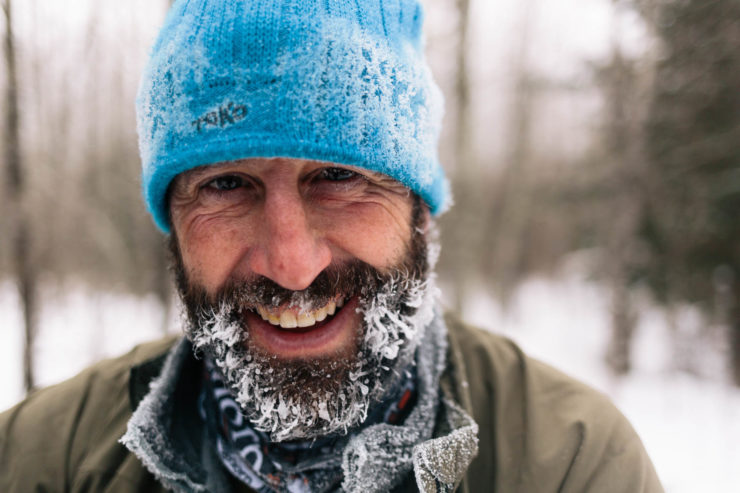 Surly’s Paul Zeigle, aka Pintz Guzld.
Surly’s Paul Zeigle, aka Pintz Guzld.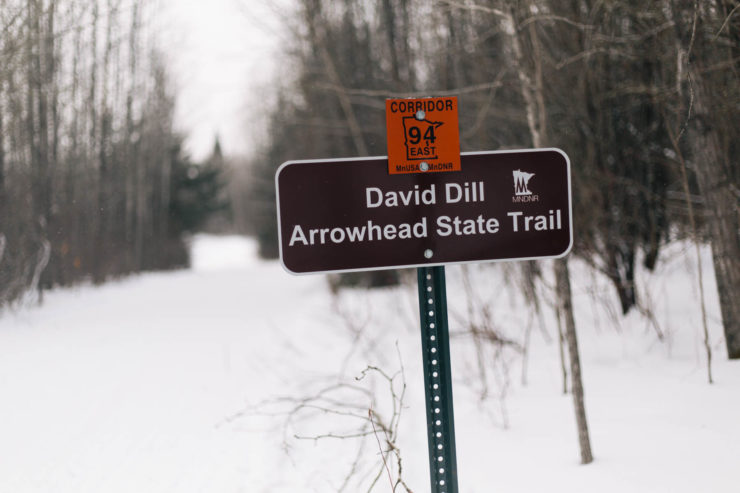 The Arrowhead 135 follows a signposted snowmobile route from International Falls to Tower, MN.
The Arrowhead 135 follows a signposted snowmobile route from International Falls to Tower, MN.
Preparation/lack thereof
Fast forward to late January as the day of the Arrowhead 135 race approaches. A flight is booked. A bike is sent to me so I can test ride it in the desert. Barely a snowflake has fallen in New Mexico.
Paul mentions a rough plan to ride 85 miles the first day. I’m not sure if I hear him right; I don’t know when I last rode 85 miles in one stint, let alone on a fatbike, let alone on snowmobile trails. I keep quiet.
Our plan is to drive up the day before, from Minneapolis to International Falls, with Surly’s mustachioed copywriter and master wordsmith Joel Swenson, aka Sweeet Beeef. The afternoon I arrive from New Mexico, we retreat into Paul’s cellar to evaluate gear choices. I quickly realised there’s no way I can cram all the cold weather clothing I’m borrowing into my seat pack. Instead, I resort to fitting a burly rear rack and panniers Paul has in his bike stash. Rookie mistake. My Pugsley looks heavy and portly next to the others.
In fact, at this point, I’m not feeling especially well prepared. I definitely intended to be. I really did. But, over the winter, a double dose of flu got the better of me and my planned miles were never quite ridden.
Fast forward again to International Falls. Outside, Canada is just across the river. Inside, we’re in our overheated motel room, sweatily cramming gear into every last nook and cranny on our bikes. Clif bars, toe warmers, jars of peanut butter, and a multitude of layers are sprawled out everywhere. There’s a lot to learn, and quickly. I’m advised to keep the snacks on my body or I might chip a tooth trying to eat them. Don’t leave even the lobes of your ears exposed, advises one volunteer, or it will be too late by the time you notice.
Then, suddenly, it’s morning and I’m amongst a crowd cramming motel food down our gullets; I’m even counting calories with each mouthful. Can I squeeze one more egg into my mouth, even if it makes me look like a chipmunk?
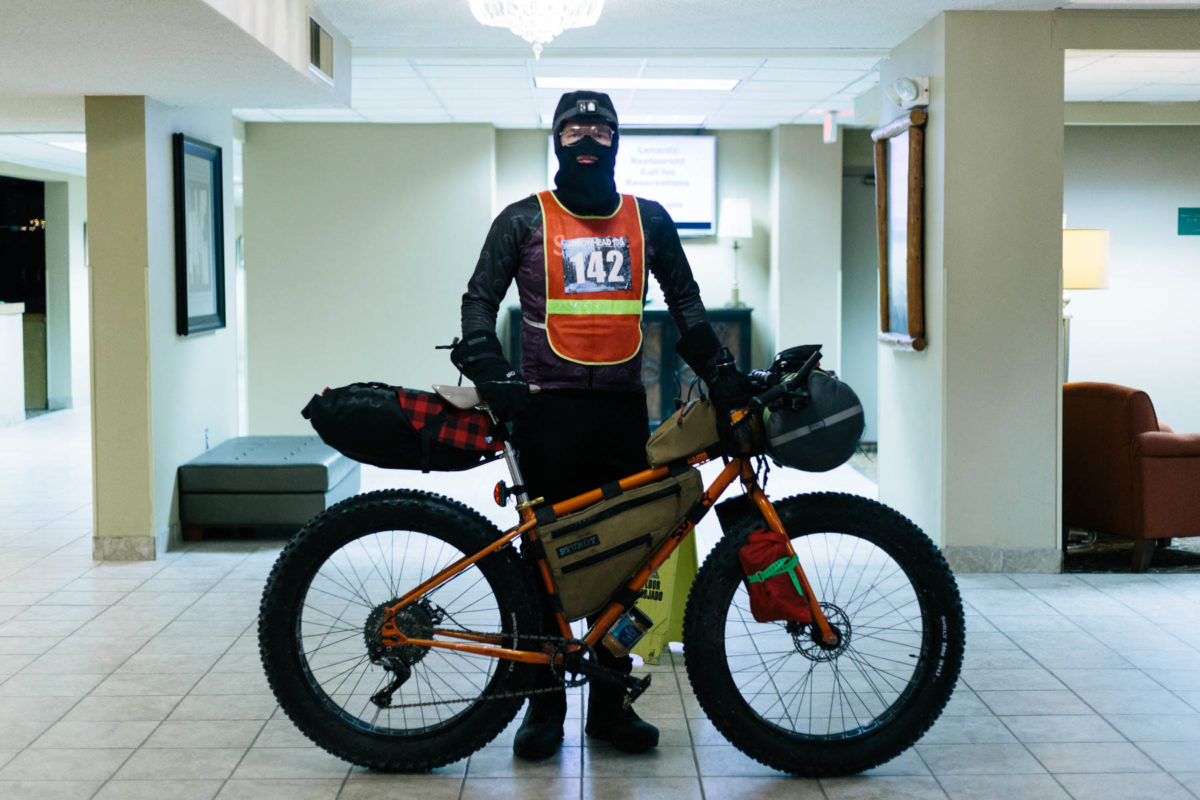
The Heist
Layering up in the manner required to enjoy – or maybe just survive – the expected temperatures is completely alien to me. I feel like a Lilliputian in a land of giants. Enormous gloves shaped like lobster claws. A -20°F sleeping bag that resembles a hay bale. And, of course, our monster fat bike tires. My own Pugsley is shod with 4.3″ rubber for this ride, sitting on 80mm rims. Others have gone even bigger. People have donned goggles, skin patches, and balaclavas to protect themselves. Their setups look as finely tuned as a Swiss watch. I take one last gaze at the bizarre group gathered around me, one that looks more like bank robbers than bike racers, then dive into the darkness outside, following a trail of red blinkies to the start line.
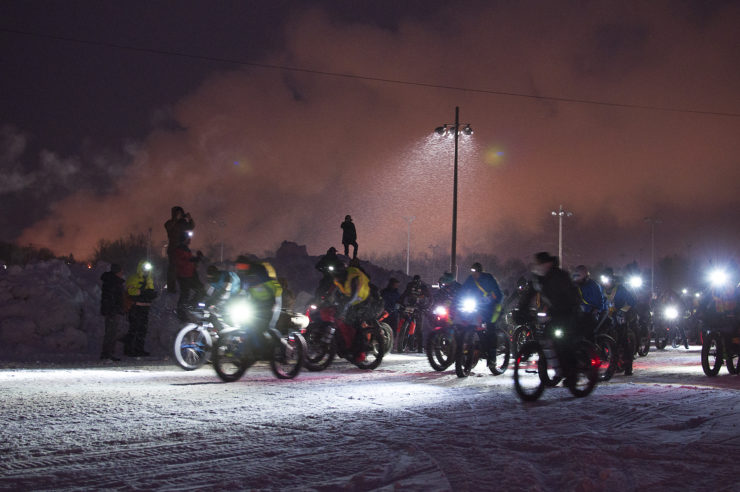
Officially, I’m not even racing. As such, I don’t have a number. I’m just along for the ride. Paul’s already ridden this route half a dozen times. My understanding of our plan is that we’ll cover the distance at a touring pace, with the promised interlude of a campout halfway through (Paul has even made us tinfoil-wrapped tortillas to look forward to). We’ll take in the sights, soak up the scene. I’ll grab some pictures.
Or so I think. In reality, it’s -15°F when we’re gathering at the start line and my camera has already shut down, a chunk of useless metal that serves only to weigh me down. Besides, no one wants to stop and pose for a shot. There are people on skis. There are people pulling sleds. There’s a dizzying array of fatbikes looking light and svelte. It’s a completely different world than anything I’ve ever seen. As with any race, I expect, the mood is tense and jumpy. The pack shoots off when fireworks are lit, a frenzied collection of bicycle bandits jostling for space in the pre-dawn light.
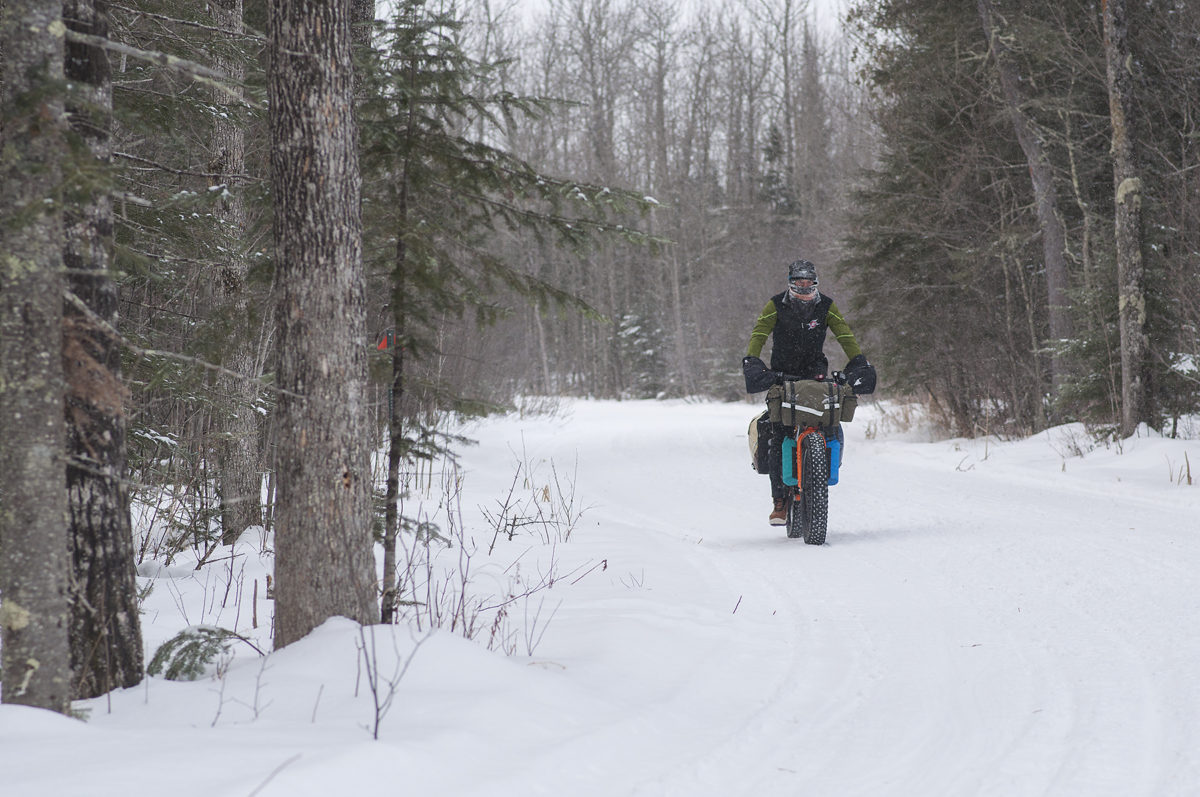
But, like any big trip I’ve been on, it’s all good once I’m riding. I lose Paul in the melee and Joel has already left me far behind, so I fall into an easy pace. Those around me are human (the super people, like the Jay Petervarys of this world, are already far, far ahead). We chat. I listen to the sound of tires on snow. I take in the sunrise, a gentle affair that slowly illuminates our narrow tunnel of darkness into a narrow tunnel of trees. I stop into one of the open huts along the way to adjust some layers. A skier slides gracefully past, sounding like a chef sharpening kitchen knives. I see his eyes from behind a balaclava and we nod. I’ll never recognise him again.
Indeed, the first 45 miles go quickly and easily. Before long, I’m even at the first checkpoint, Gateway General Store, sipping soup, ice melting off my beard and dripping on the floor, looking at other people with ice dripping off their beards onto the floor. The faster riders have long gone; they barely pause for breath at each required checkpoint. I meet up with Joel and a see a few other familiar faces, or rather, familiar bundles of clothing. I have a realisation: I’m doing this, and it’s ok! I’m even enjoying it! Joel’s feeling a little less festive. Also an Arrowhead rookie, he’s made the mistake of wearing wire-rimmed glasses, and they’ve already half frozen to his face and given his skin mild frostbite. It’s an immediate reminder of where we are, and the respect our environment deserves. Paul appears, too. Given that he’s recovering from the flu, he isn’t looking his best. But, being the Minnesotan that he is, there’s no question as to whether or not he’ll forge ahead.
The two of us ride together for the next few hours, stopping occasionally to nibble food and sip water (tip: fill thermoses with hot liquid at checkpoints. If you’re lucky, it might still be tepid after an hour). By now, the hills are beginning in earnest – there are almost 7,000 feet of climbing on the course – and I’m promised by Arrowhead veterans that more is to come. I’m good with that, because I’m actually enjoying the change in terrain. I crank up the climbs, out of the saddle, warming up only to bomb down wide. Snowy, bumpy descents are fun!
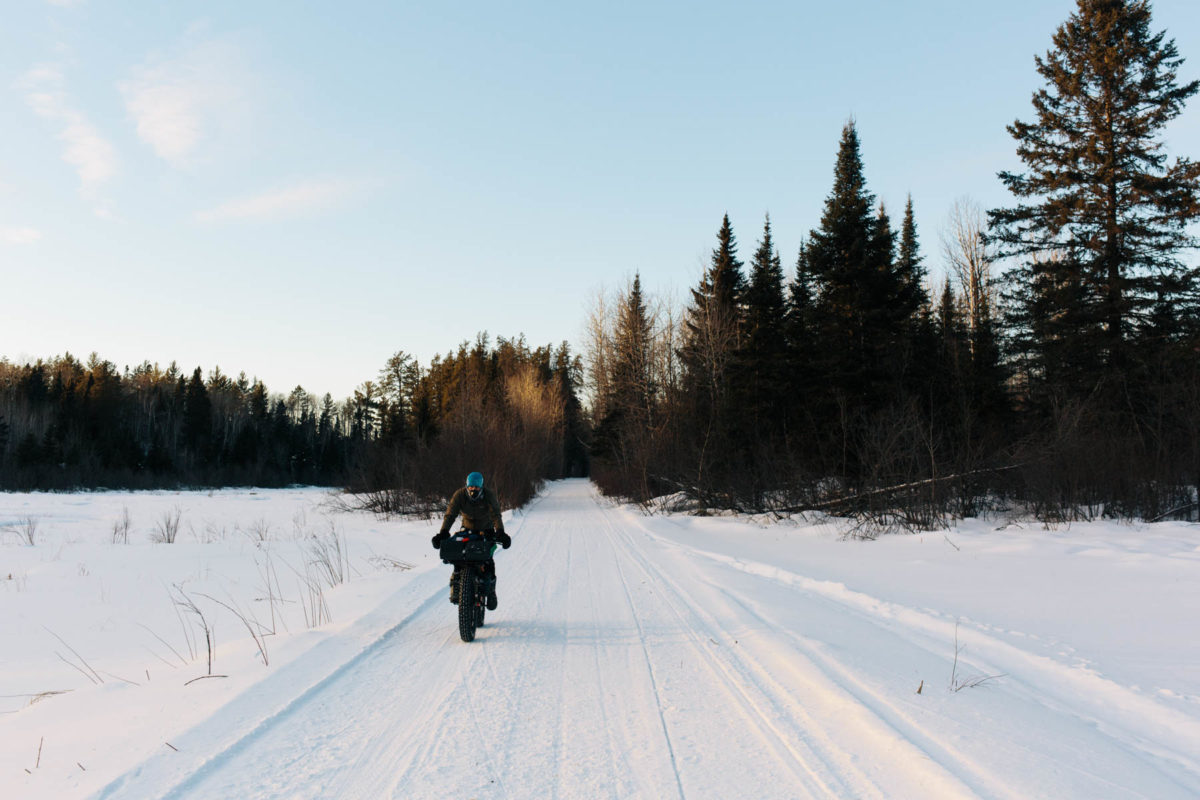
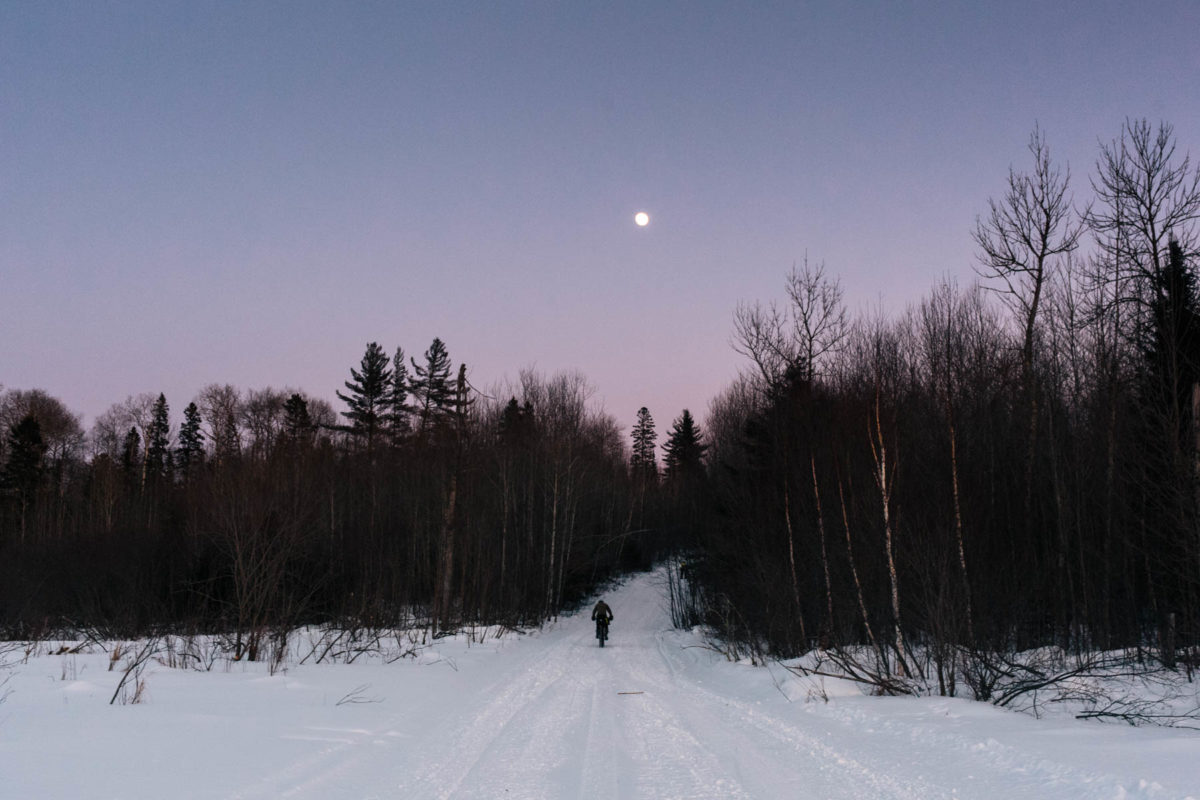
Zeigles to the rescue
Paul isn’t feeling so good by now, but he soldiers on. As a veteran of several Arrowheads, he’s no stranger to digging deep (he even walked the route in the year it dropped to -38°F). As always, I enjoy his company, so I’m glad he’s hanging in there. We even stop to chat to briefly with Erwin ‘Erv’ Burglund, the oldest rider on the course, and I’m amazed by the positive vibes that emanate from his 75-year-old self.
Darkness befalls us once more, and with it, the ambient temperature begins its unflinching plummet to the depths of minus digits. For me, the highlight of the day is a ride across a frozen lake, an enchanting experience. It draws us towards the lights of MelGeorges, the second checkpoint, and an especially cosy one at that. There, we find Joel, solemnly contemplating the emotional barrier of standing up and heading back out into the frigid darkness.
In theory – and with a solid 75 miles behind us – our plan is to push on a little further and camp for the night. But, with temperatures predicted to drop to -25°F or below, Paul decides it’s best for him to find shelter indoors. Given all the food we’re carrying, I’m a little disappointed to forgo the crackling fire that had lured me to Minnesota in the first place. But there’s no way I want to set off alone, and besides, I’ve learned not to look a gift horse in the mouth, especially when it’s the opportunity to spend a wintry night inside a warm cabin. It turns out that the Zeigle family is here en masse and they’re all Arrowhead obsessed. Patrick, Paul’s cousin, has rented a cabin to support a friend, Whitney Beadle, a rider who actually went on to finish in second place in the women’s category. He’s driven down from Madison, Wisconsin, with his dad, Paul’s brother Mike, who’s racing the Arrowhead for the umpteenth time. The decision to dive into one of the bunkbeds doesn’t take me too long. Sure, I could camp in the yard and prove a point. But, it is what it is; any sense of rider’s remorse certainly doesn’t affect a deep, sound, and restful sleep.
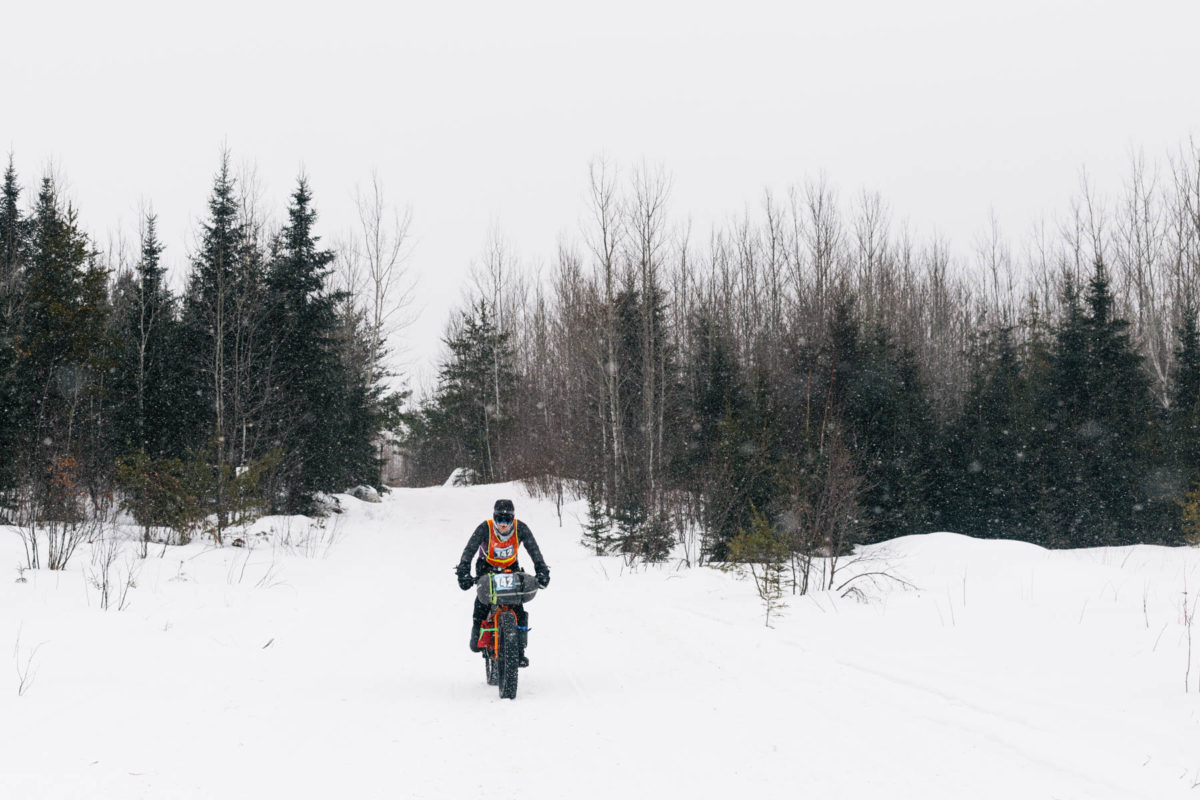
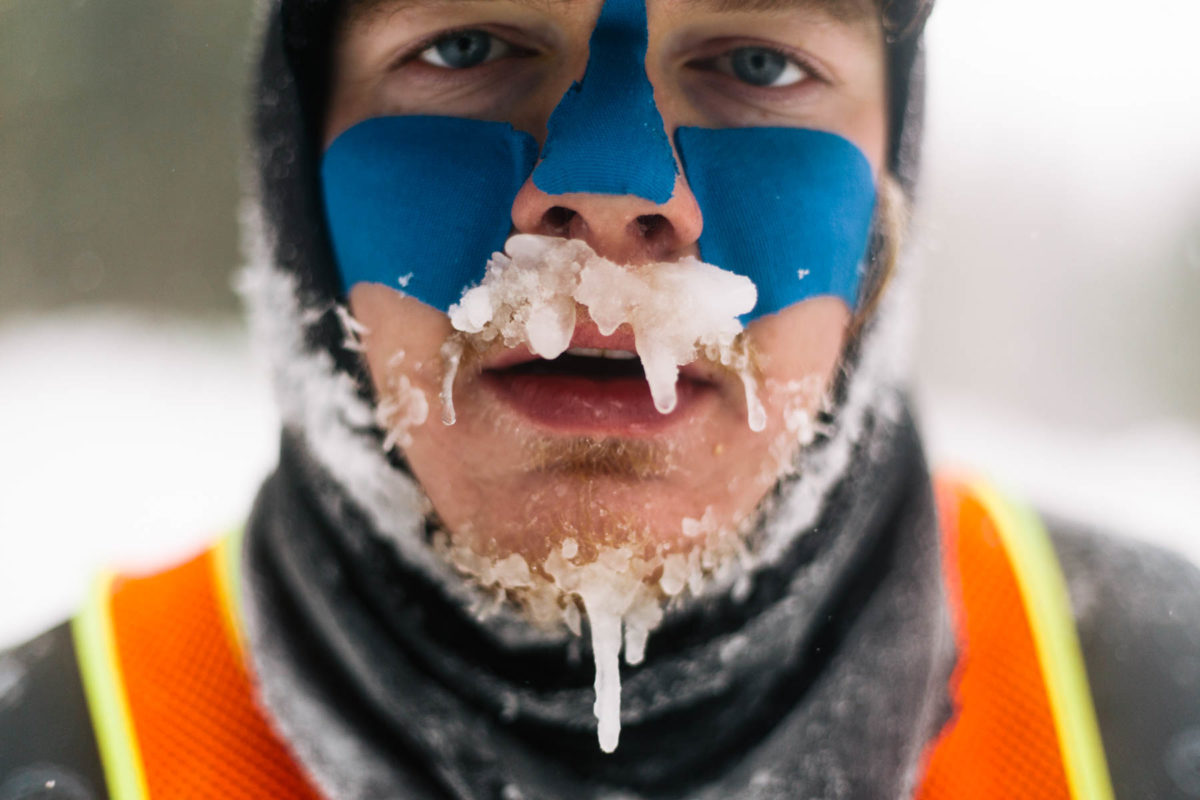 Joel is winning the snotsicle contest.
Joel is winning the snotsicle contest.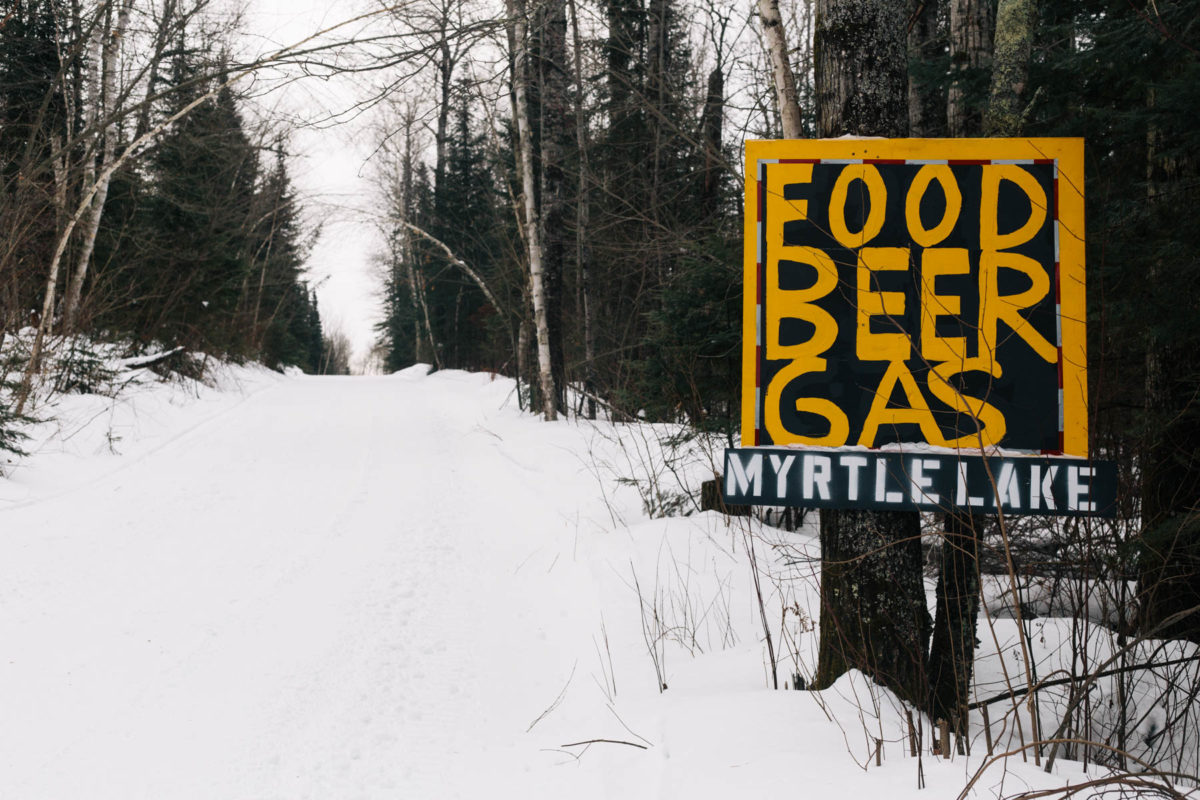 Beware drunken snowmobile drivers!
Beware drunken snowmobile drivers!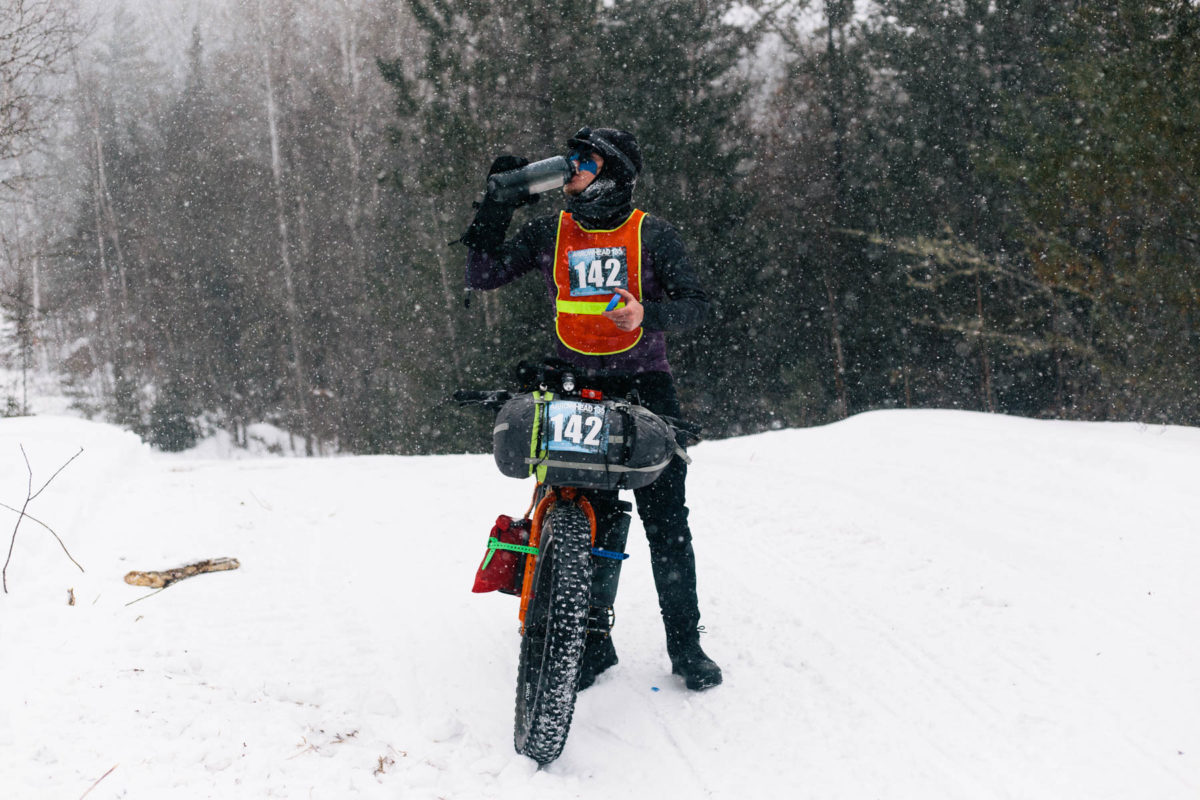 Quick stops for drinks and snacks keep the legs turning.
Quick stops for drinks and snacks keep the legs turning.
Unfortunately, but not surprisingly, perhaps, Paul coughs and splutters all night. By morning, it’s clear his race is over, leaving Joel, Mike, and I to set off together for the last push. The conversation comes easily and it’s good to chat and let stories help the miles slip by. With hours of rejuvenating sleep in our bodies, we slowly catch up with other riders, just as snow starts to fall. Our pace is perfect; fast enough to cover ground but relaxed enough to take photos now that my camera has returned to life, or stop to compare snotsicles. Eventually, after a crescendo in both snowfall and rolling hills – each climb answered by a barreling, half-blind descent – we finally reach Surly’s own checkpoint, famed amongst more relaxed racers for its wood burning fire, beer, and whisky. The teepee is crammed with other racers, most of whom have obviously suffered during the previous night, with temperatures having dropped down to -25°F or lower. I feel a pang of guilt that we enjoyed such a warm night… but when we tell fellow riders, there’s no hard feelings. They just think we’re sensible.
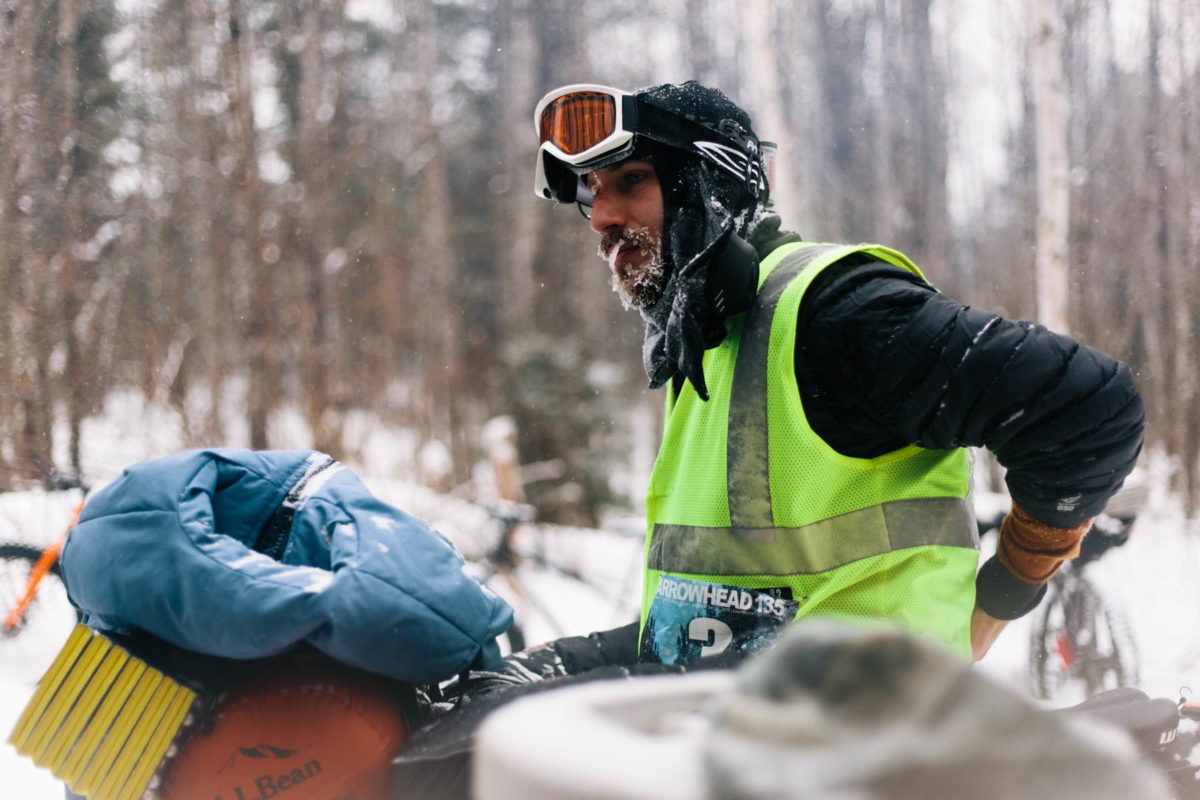
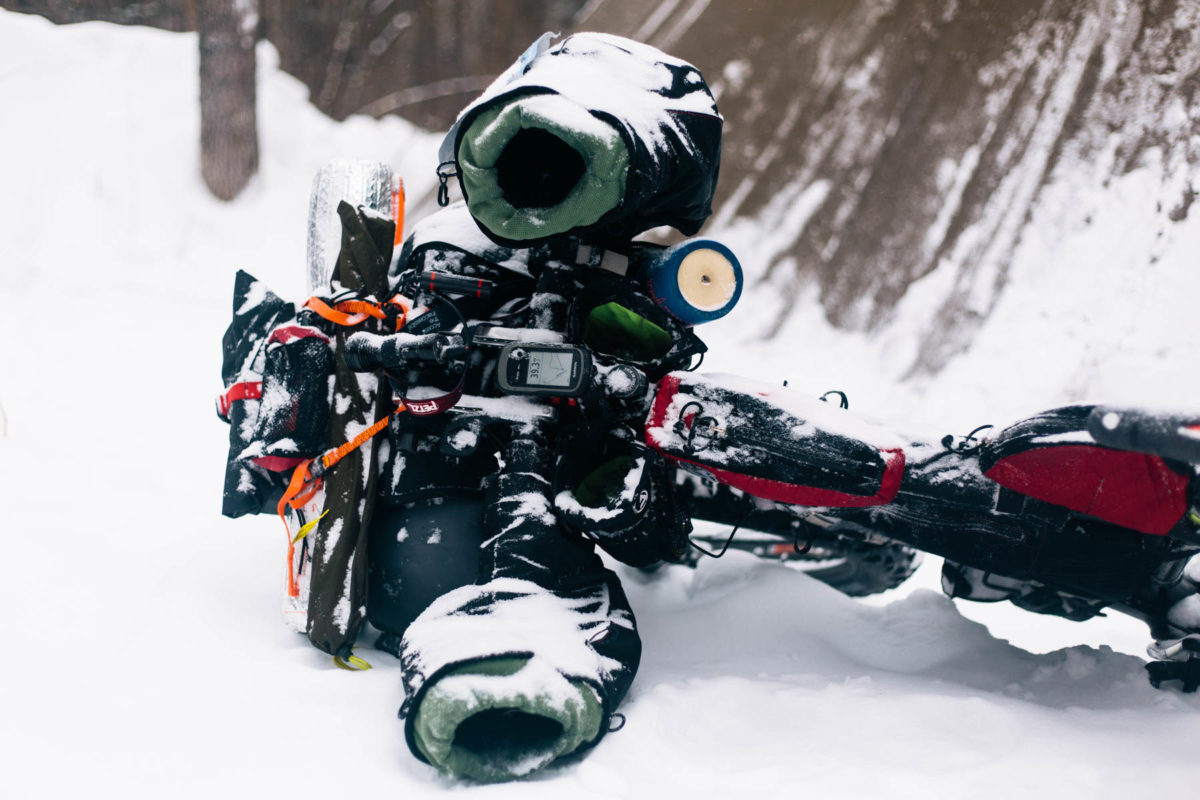
Just a short push and grunt up Wakemup Hill lies ahead, before 25 flat miles to the finish line. Even still, leaving Surly’s enclave of warmth and good vibes takes longer than we plan, so any hopes of making it before dark are soon forgotten, especially given the headwind in the forecast.
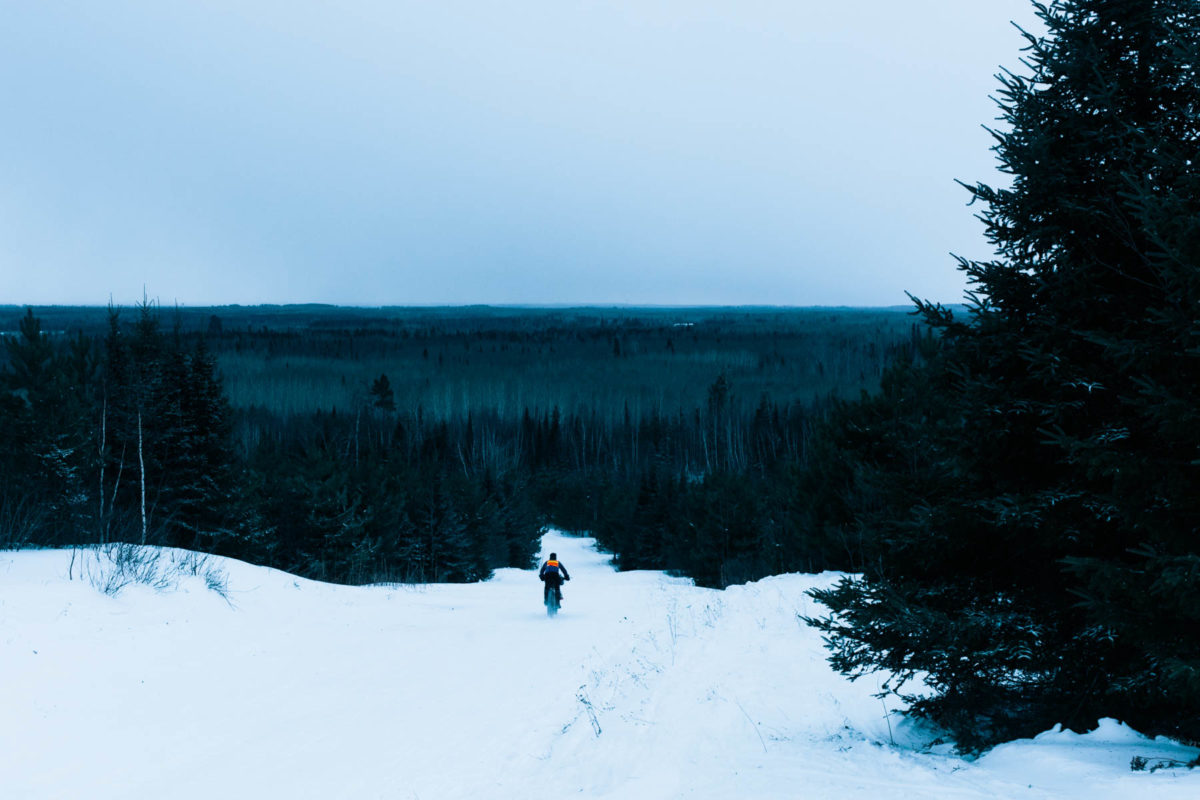
The White Carpet
Daylight retreats once more into darkness as the final miles count down. Soon, it’s just us and our soft, white carpet, leading us through a patchwork of woodland and frozen swamp under a night sky filled with stars. I’m feeling good. Happy, even. I allow myself the time to appreciate these last miles and take stock of the 130 that preceded them. I’m thrilled to have made it out to this land of extremes. I’m thankful to have watched the winter light above the horizon, as it softened from blue to purple and eventually to jet black. I don’t doubt my ‘unracer’ attitude has played a part in my mental wellbeing. With no ill thoughts towards the ticking clock, almost all sense of pressure is lifted from the experience. I’m simply out there, enjoying it for what it is.
I pull up to the finish line, where I’m bear-hugged by Salsa’s Mike Riemer outside the bright lights of Fortune Bay Casino, a suitably surreal locale to celebrate the end of the winter race. There’s a crackling fire, just like the one I’d envisaged for our planned campout. I’m pointed to a room where platters of food await. I have 135 snowy miles in my legs and I feel great. Even if a race format isn’t ultimately for me, there’s no doubt that the Arrowhead has opened my eyes the incredible sense of camaraderie for which ultras are known.
And besides, while we’re all seated together, feasting and chatting, the time it took us to get to that very moment becomes irrelevant. It was the shared experience. As for me, my mind is already wandering back to the open plains, basking in those delicate minutes when dusk slipped into night. I think back to the moments I stopped to turn on my light, take a sip of just-warm tea, munch slowly on an energy bar, and push off once more into darkness to the sound of crunching snow, my own breath, and little more. Minnesota has shared a little of her winter magic and it could well be that I’ll be back for more.
A Newbie’s Arrowhead Advice
- For Joel’s excellent report, see here. It includes a very useful gear list, handy for both this event and any winter ride.
- For a racer’s perspective, check out Neil Belchenko’s 2015 report.
- Pack fats, like bacon, and real food! They’re just what your mind and body needs.
- Make sure your feet are toasty or risk frost bite. Toe warmers can really help. I wore a pair of Wölvhammers and to be honest, I don’t think I’d have survived without them. I wore Cobrafist pogies which worked really well, once I was used to them, and allowed me to run thin gloves to use my camera (when it worked).
- Cover extremities, or they’ll freeze without you knowing it. I was given some face tape and it really helped.
- Be prepared! (more than I was) For any winter ride race, your bike and gear need to be 100% dialed. You’re on your own if you have a mechanical; it’s simply too cold to stop and hang out.
- The Pugsley may be a heavier fat bike than some, but I didn’t doubt it for a second. It’s incredibly surefooted, making it ideal for riding snowmobile trails.
- Even though a rack and pannier setup weighs more than bikepacking bags, it’s super easy to pack and access, which can be an advantage in cold temps. I ran my Fabio Chest up front and Oveja Negra’s Bootlegger fork bags.
- The Arrowhead is officially a snowmobile route, so you need a permit to tour it outside of the race.
- Wear high-viz clothing and have blinkies on your bike, so snowmobiles can see you. And pull over when they get close. Those things are fast!
Thanks for the Arrowhead 135 organisers for letting me join the race in a non-race capacity, and to all the volunteers for their help and support. To Paul Zeigle for initiating me to the world of ultras, Surly style. And to 45NRTH for providing me with cold weather gear without which I would, undoubtedly, have turned into a frozen statue of a rider and still be out on the trail…
Please keep the conversation civil, constructive, and inclusive, or your comment will be removed.






